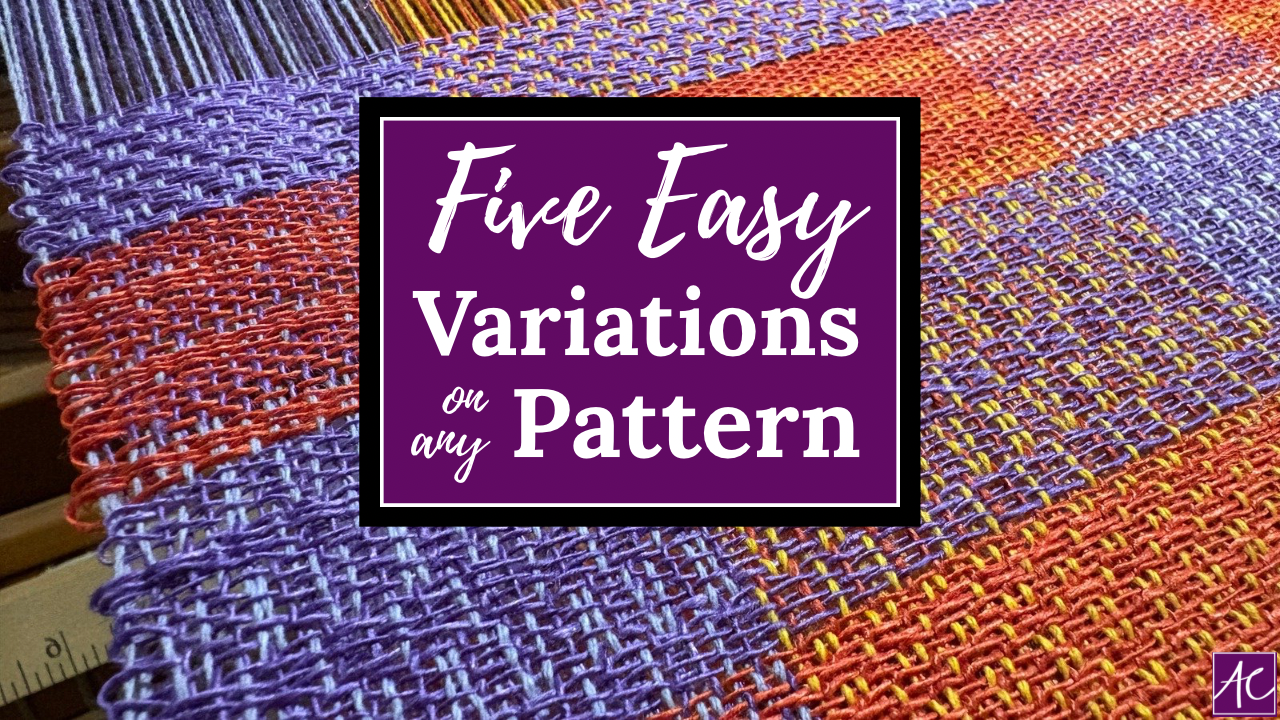April is really the first month of the year when flowers begin popping out of the ground – especially in NW Indiana. If you live farther south, you probably begin experiencing it earlier. But, not here! Today, the high is 44 and the low is 39. Still sounds like winter to me. But, those crocuses, daffodils and hyacinths are bravely doing their part to bring a bit of color and cheer to The Region.
Along with the flowers comes a new awareness for what we’re doing to help/hurt Mother Nature. I love that Earth Day has become such an event and that folks are actively making efforts to do their part. We try to be good recyclers, and use less plastic bags, and shop at resale stores, and waste less food. It’s fabulous!
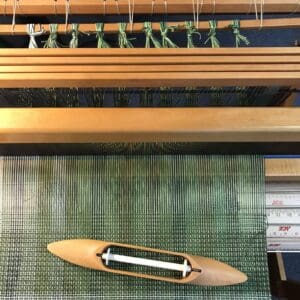
There are always inches of yarn that don’t get incorporated into the fabric!
Going hand-in-hand with that train of thought, I love the idea of being mindful in my art, as well. Weavers deal with waste every single project. On every planning sheet for every bolt of fabric I’ve ever created, there is a category for “waste”. In this case, it refers to the inches of yarn tied to the back of the loom that can’t ever be fully pulled through the shafts while keeping the tension. It’s just the nature of the beast, if you will.
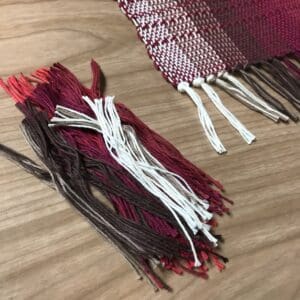
These lovelies will be tied up & reused!
And while I can’t magically change the way looms operate, I can find more inventive ways to use those inches of yarns leftover in each project. For the longer yarns (let’s say anything more than 4 inches), I have started to knot the ends together and reuse those chains as a weft in a future project. It creates fun little pompoms on top of the fabric – great texture!
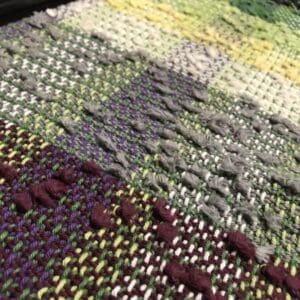
How cute are the pompoms???
Each time I empty out a cone or tube of yarn, I am left with the cardboard core (sometimes plastic, but usually a heavy duty cardboard). I put out a call to friends on Facebook awhile back and was surprised by how many folks were interested in using them for art/craft projects, or even cakes! So, that has become a fabulous way to repurpose those items, rather than toss.
In the case of having too much of one color of yarn, or yarns I know I won’t use, I’ve been able to swap/sell/give them away to fellow weavers in our local Duneland Weaver’s Guild. This is always a mystical transaction because somehow I still come home with more yarn! Crazy!

Recycled neckties for a future project
Also in the plus column, I have the ability to repurpose other people’s items and incorporate them into brand new fabric. Old neckties, silk scarves, clothing of any kind – it can all be cut and added into handwoven fabric, which can then be sewn into something that person will enjoy. I love being able to offer that service!
While I have slowly, but surely been thinking through a number of ways to help the environment, I still have a few items to consider. For the shorter yarns used for knots (smaller than 4 inches), those still tend to go into the circular file. And I use a really cheap toilet paper for spacers at the beginning of each project. But, I’ll be honest, I’m just going to let that one go. (There’s a bad pun in there somewhere…)
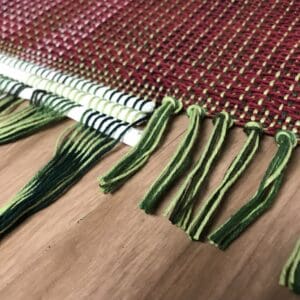
Here’s where I cut off yarn and TP!
Overall, I like the challenge of not only creating beautiful, handwoven fabric, but doing so in a thoughtful way. We only get one life to help Mother Earth – might as well do the best job we can! What little things do you incorporate into your every day routine that help the planet? Happy Earth Day, everyone!

